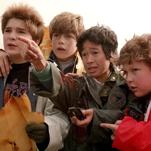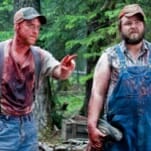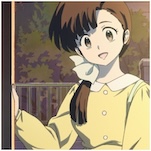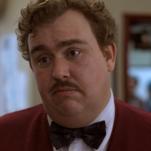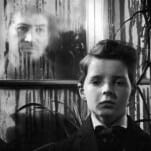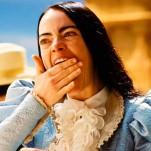Making Blue Jay: A Conversation with Mark Duplass and Alex Lehmann
Photo Credit: Alli Harvey/Getty Images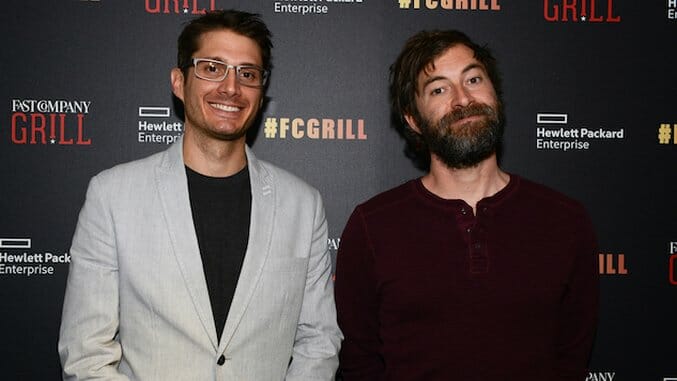
The wistful two-hander drama Blue Jay is the latest offering from the Duplass Brothers Productions juggernaut, starring Mark Duplass and Sarah Paulson. As former high school sweethearts Jim and Amanda, the two are drawn back to their small California mountain town by random events—the death of his mother, her sister’s pregnancy. Idle chitchat during a run-in in a grocery aisle leads to coffee at a local diner, and then beer and jellybeans by the lake.
They spend the day reminiscing about the past and talking about their presents. She’s married to an older man with a couple of stepsons in high school; Jim’s been drifting after he and his uncle had a falling-out over their business. They fondly remember the good old days, and return to Jim’s mom’s house to go through old photos and letters. Blue Jay seemingly begins as a domestic counterpart to Richard Linklater’s Before Sunrise series, with the flirtation leading to a will they-or-won’t they ending. But since it’s a Duplass Brothers film, written by Mark Duplass, Blue Jay throws a curveball that answers Jim’s, Amanda’s and the audience’s most pressing questions.
The black-and-white film is directed by Alex Lehmann, a journeyman camera operator and cinematographer. Lehmann’s debut documentary feature Asperger’s Are Us was released earlier this year as another Duplass Brothers film. Last week, Lehmann and Mark Duplass, who first worked together on Duplass’ ensemble TV comedy The League, attended a packed Los Angeles premiere screening at Cinefamily, a local indie theater. Paste had a chance to chat with both of them on its back patio while waiting for the Q&A session to begin. Our conversation touched upon a number of topics, from Lehmann’s filmmaking approach and the differences between scripted and improvised productions to the Duplass’ dedication to mentoring younger filmmakers and the greatness of Sarah Paulson.
Paste: I think I know the answer to this, but was the choice for shooting in black-and-white a nostalgia factor?
Mark Duplass: Part of it, yeah.
Alex Lehmann: There were a couple of things, but definitely the nostalgia factor, and we really wanted to simplify it. We joked a lot about two characters, two colors. The latest edition is a little bit of gray area as well.
Duplass: Oh yeah, that’s good.
Lehmann: But really, to simply … to strip away. The whole film is obviously very simple, and we wanted to strip away a lot of things and focus on the characters and the story and really make it that simple.
[Mild spoiler ahead.]
Paste: Yes, the film is just going, going along, and then it sucker punches you 10 minutes before the end. Is that something you were conscious of when you were writing it?
Duplass: The movie is highly improvised in terms of the dialogue. We knew what the scenes were going to be, what the structure of the movie was going to be, and all of the plot points. We weren’t totally certain how connected Jim and Amanda would be because we’d have to find that out on set. But the more we went along, we started to feel like they had a very special connection. Inevitably, that started to raise the question, “Well, what is the thing that took them apart if they were so connected?” And we felt we had a responsibility to answer that correctly.
Paste: You said that a lot of the dialogue was improvised, but what about the filmmaking choices? I know there’s a lot of handheld [shots] … I felt I was almost a voyeur.
Lehmann: I think Mark hired me because he knew I had a documentary background. He wanted someone to direct from behind the camera, holding the camera. A lot of the cinematography is reactive to what the characters are doing. We want the audience to feel like they’re alone with Jim and Amanda in the room and make it a really personal experience as they are going through the night.
Duplass: And to be clear, it’s easy to hire a cameraman who shoots handheld and can get close. But not all cameramen know how to do it on the fly without communicating about it ahead of time. We didn’t have marks or blocks or anything, so he has to be very instinctual as a storyteller and know where to go—and tasteful to know how to do it—when to be far away and when to be close. That’s a really special skill, and not a lot of people can do it well. At least in the way I would want it done.
Paste: I read another joint interview that you guys did, and it said something about that awkward moment when you run into somebody from high school. And that’s that feeling you wanted to capture in Blue Jay. How did you do that in terms of plotting out the script?
Duplass: That was really kind of the seed of where it started, which is, even if you’re doing well in life, you might feel a certain desire to hide from people who knew you back then or maybe you feel a little ashamed at not being what you were or what they thought you might be. It brings up a lot of questions for you. I’m turning 40 this year so I’m getting close to that mid-lifey kind of thing, and it felt very rife for a story to be told.
It’s always fun to make fun of the ignorance and kind of youthful stupidity that we all had in high school. But occasionally, you start to think, “I kind of miss some of that, and I don’t know if I want it back necessarily,” and that made us think of that confused feeling of running into an ex. Maybe reconnecting with them and thinking, “Is this just because I’m nostalgic or is there something new being birthed here?” And that felt like a big story to us.
Paste: How did you try to capture that awkwardness with the camera, the tension between the two?
Lehmann: We were all definitely chasing what was written from the very first outline, which has a really clear, a nostalgic, melancholy feel. I was telling Mark at another Q&A recently that it was really cool going back and reading our very first treatment. That emotion, that tone is there, and it gave me goose bumps to see that it was there from the get-go. But honestly, [the cinematography] was just being reactive to two phenomenal actors telling a phenomenal story—like it felt I was making a documentary about Jim and Amanda.
We would all talk and have dinner every night and kind of figure out how the last scene played. Where was there energy? Were they too comfortable with each other? Were they not too comfortable? So that was something we did with Mark and Sarah and our creative producers Mel Eslyn, Xan Aranda and Sydney Fleischmann. We would all just vibe out on how it had gone because we shot chronologically. So we were able to chase the story and keep things fresh from scene to scene.
-

-

-

-

-

-

-

-

-

-

-

-

-

-

-

-

-

-

-

-

-

-

-

-

-

-

-

-

-

-

-

-

-

-

-

-

-

-

-

-
































